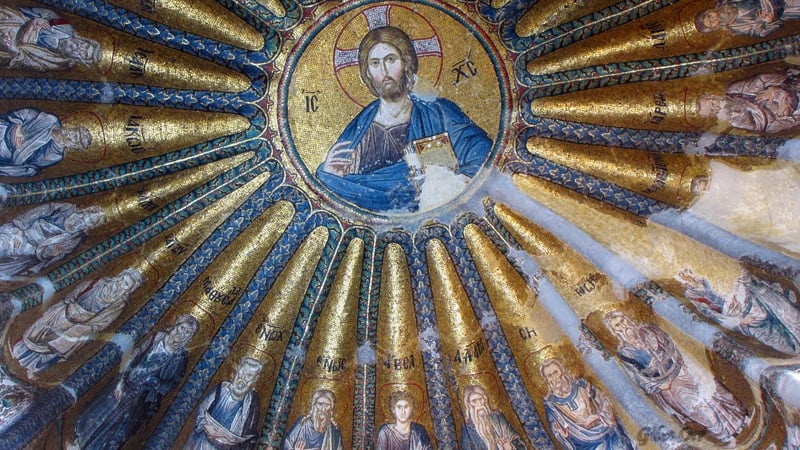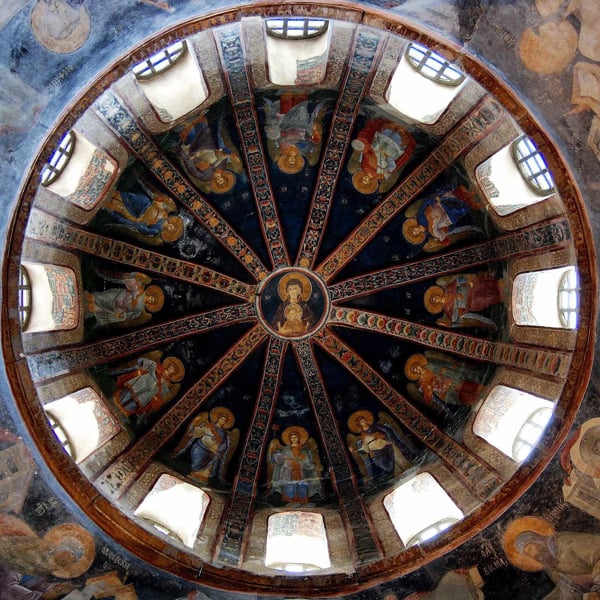Nature and City in the Greek East
19 August 2015The beauty of the city is not as heretofore scattered over it in patches, but covers the whole area like a robe woven to the fringe. The city gleams with gold and porphyry. Were Constantine to see the city he founded, he would find it fair, not with apparent but with real beauty.
Themistius, 4th Century Byzantine Orator
***
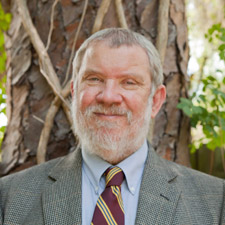
Bruce V. Foltz
Constantinople. Constantinopolis Nova Roma: “the polis founded by Constantine as the New Rome.” First known as the Greek colony of Byzantium, it had been settled by residents of ancient Megara, faraway city on the Isthmus of Corinth, the narrow land-bridge between Attica and the Peloponnese. Spanning both Europe and Asia, Byzantium—Constantinople—modern-day Istanbul—has always served as a bridge between these two great continents of the ancient world, a double-headed eagle looking simultaneously east and west. And this was indeed the principal reason for its selection as the New Rome, the imperial capital for what by the fourth century had become as much an Asian as a European Empire. That, and to be a bridge between heaven and earth, a city to do what Old Rome never could: to embody and set to work the ontological bridge between the visible and the invisible at which both occidental philosophy and oriental religion had, in their own ways, and to varying degrees, already arrived.
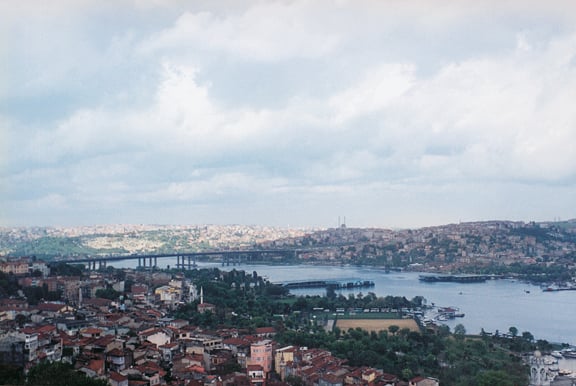
By nature, it has always been a land of waters that would separate. Waters of the Bosporos. Waters of the Sea of Marmara — the Sea of Marble. Waters of the Golden Horn. Three waters, everywhere visible, and often audible, ready to isolate its sectors and perhaps to swamp, and overwhelm, the putative city itself in waters and seas. These are not just nearby. They surround and embrace the city, as if to immerse it, inundate it. The city is built down into the very waters themselves, and it everywhere rises up from them.
Civically, it is—on the contrary—a land of bridges. Its bridging and conjoining character is its primary civic feature. Its unity and coherence as a city is a function of human techne: both the human art that joins the terrestrial element to the circuit of the city, and the human art that joins the terrestrial with the celestial, the visible with the invisible, the secular with the sacred.
“Therefore I have sailed the seas and come,” sings the poet, “to the holy city of Byzantium.” Crossing the waters to the holy city, he hopes to find “sages standing in God’s holy fire as in the gold mosaic of a wall”—and William Butler Yeats’ “Sailing to Byzantium” unfolds with images of golden artifacts and golden artisans, and even golden nature! Goldsmiths and hammered gold. Golden boughs and golden birds. In his prose work, A Vision, Yeats envisions golden Byzantium as the bridge city, the unifying city, the integral city, reflecting that:
… in early Byzantium, [as] maybe never before or since in recorded history, religious, aesthetic and practical life were one, that architect and artificers… spoke to the multitude and the few alike. The painter, the mosaic worker, the worker in gold and silver, the illuminator of sacred books, were almost impersonal, almost perhaps without the consciousness of individual design, absorbed in their subject-matter and… the vision of a whole people.
He goes on to imagine that had he really sailed to the Byzantium of Justinian the Great, he would have found “in some little wine-shop some philosophical worker in mosaic who could answer all my questions, the supernatural descending nearer to him than to Plotinus even.” Unity of the religious, the aesthetic, and the practical. Unity of the human, the natural, and the supernatural. The ever-attracting luster of gold, and the mosaic composite of golden fragments that have been drawn together into one.
Finally, in his “Preface” to the 1893 edition of the “Works” of William Blake, Yeats reflects that
“In Imagination only we find a Human Faculty that touches nature at one side, and spirit on the other. Imagination may be described as that which is sent bringing spirit to nature, entering into nature, and seemingly losing its spirit, that nature being revealed as symbol may lose the power to delude.”
It is thus no longer in Byzantium itself—undone in 1453, as the last act of the genuine “Decline and Fall of the Roman Empire”—that we can find the “natural city”—the city that would bridge the organic world, the world of the artisan, and the spiritual world, unifying spirit and nature, nature and super-nature. The poet seems to suggest that we can now find the natural city only in the imagination. The bridge—for the modernist poet—is now an interior, and even a psychological function.
Was Constantinople, “the holy city,” in fact “the natural city” as well? Let us listen closely to the report of an envoy that actually did sail to Byzantium in the tenth century. Traveling the earth in search of the religion best suited to unify the Russian people, the emissaries of Prince Vladimir of Kiev finally reached Constantinople. Their report back to him became decisive, and it is quoted in every history of Russia:
Then we went to [Byzantium], and the Greeks led us to the edifices where they worship their God, and we knew not whether we were in heaven or on earth. For on earth there is no such splendor or such beauty, and we are at a loss how to describe it. We only know that God dwells there among men, and their service is fairer than the ceremonies of other nations. For we cannot forget that beauty. Every man, after tasting something sweet, is afterwards unwilling to accept that which is bitter.
As in the poetic narratives of Yeats, in this historic account too we find earth and heaven, the visible and the invisible, joined together by means of beauty. But this is not the beauty of nature left in a raw or wild or pristine state. It is that of nature rendered beautiful through techne, through human art and artifice: through the art of the architect and poet and iconographer, of ritual and liturgy, and indeed, through the art of the goldsmith. The beauty that bridges, joins together, and unifies —the beauty that renders possible the seeming paradox of the natural city—this beauty itself comes about not through nature, but through production, through what the Greek language spoken in Byzantium called poeisis.
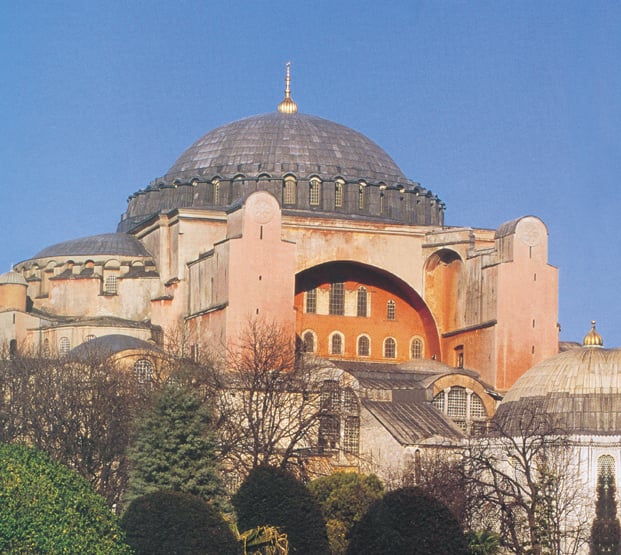
Hagia Sophia
These portrayals of Byzantium find deep resonance in the aesthetic thought of Martin Heidegger, which can help articulate their coherence. In Heidegger’s thought, the dark self-closure of earth is thought in contrast both to the openness of what he calls “world” as well as with the manifest measure of the heavens. The work of art, then, is understood as “setting-forth” the earth, allowing it to be seen in its earthliness, even as it brings the earthly into the dynamic unity of a world. (And what work of art, we may ask, sets forth the earth more dynamically and dramatically—and sets to work a world more effectively—than the Hagia Sophia, the “Great Church” of Constantinople?) Beauty, in turn, can be seen as the revealing or un-concealing of physis, nature regarded as what comes forth of its own accord. Moreover, because physis or “nature” is not just one region of beings, but rather is everywhere emergent in all that is, to reveal this all-present self-emergence through beauty is at the same time to reveal the unity through which beings as a whole join together and cohere. “Beauty,” Heidegger maintains, “is the original unifying One.” Nor is this a simple or abstract unity. Because it is “all-presence,” beauty is that captivating, enrapturing unity that “lets one opposite come to presence in its opposite.” (A unity, we may add, that allows the captivating conjoining of visible and invisible, the human and divine, the celestial and terrestrial, sacred and secular, nature and the city.) Finally, Heidegger sees this integral and healing unity disclosed by the arts in their “poetic” character as itself being a revealing of what he calls “the holy.” He characterizes the latter, in turn, as the necessary element for humans to encounter the divine, and thus for the authentic poetic task—the task of art itself—to be possible. Perhaps, then, rather than being incidental to its character as “natural city,” the fact that Constantinople was singularly founded as a sacred city, as a city that would link heaven and earth—this establishment of the city as the great bridge between earth and heaven, and vice versa—would serve as the very precondition for its singular power to unify nature and humanity as well. The natural city, then, would at the same time be, in the words of Yeats, “the holy city.” Byzantium is not only the New Rome: it is also the New Jerusalem—as its residents, in fact, understood it to be.
But we must ask once again, was Byzantium—not just the City of Constantinople, but the inhabited empire itself—was Byzantium in some distinctive and even definitive sense, really “the natural city”? What we have considered so far, from the poetic vision of Yeats to the captivated, enraptured report of the Russian emissaries, is surely suggestive, but it is hardly conclusive. And indeed, there is a body of opinion and scholarship that would argue just the contrary: that rather than being “the natural city,” Byzantium represented instead the historical-cultural beginning of the unnatural city.
The field of Byzantine Studies is in its early stages, still far from overcoming twelve hundred years of Western prejudice and provincialism in understanding not just Eastern Christendom, but European history as a whole. The entire period of Late Antiquity— the years from 250 to 800, during which Byzantium took shape and first flourished—has been seen almost exclusively through the prism of the “Dark Ages” undergone by the Franks and Gauls in Western Europe. Eastern Christendom, too, has been viewed from the perspective of the Latin Church that was born out of those dark times. Seen in this way, Byzantine Christianity becomes merely a mystical aberration from the Latin norm, and Byzantium as a whole a curious, rococo remnant, somehow persisting out on the margins. It is hardly surprising, then, that few of those who have thought historically about nature and city have been free from this parochialism. The architectural historian Vincent Scully—who is in other respects without peer for his lifelong study of the relation between nature and the city—does only slightly better than most. Examining his otherwise excellent narrative will sharpen our understanding of Byzantium as the natural city.
In his recent book, Architecture: the Natural and the Manmade, Scully presents the fruit of a life’s work: a magisterial history of architecture tracing the alienation of the city and nature, from the ancient Egyptians, Minoans, and Mesoamericans to its sad end with the inhumanity of modernist architecture and the frivolity of the postmodern school. Scully sees two tendencies at play in the relation between our buildings and the natural environment around them. One sees the city as part of the landscape, and seeks in its architecture to imitate and intensify surrounding nature, to invoke its deities and indeed to aid and assist them. His favored example is the great pyramid (the “Temple of the Moon”) at Teotihuacàn, which Scully sees as mimetically presenting the spirit of the mountain that serves as its background. And in doing so, it evokes—and invokes—the water goddess to bring down the needed water from the earthly heights. (He passes lightly over the fact that all too often, as was certainly the case with the Aztecs, this kind of primal identification with nature has simultaneously entailed human sacrifice to hungry deities as well.) In the second tendency, literally invented by the ancient Greeks, the city stands up against nature, confronts it, raises up human—and eventually, abstract and geometrical— forms to master and control it. At a certain point, this mastery reaches a point of totalization, in which the world is brought indoors—that is, the interior environment of the buildings becomes the primary element, a world unto itself to replace the natural environment. This latter step, Scully argues, is taken first of all in the Pantheon of Rome, whose dome is conceived as a planetarium, but even more decisively in the great temple, the Hagia Sophia of Constantinople, whose circular dome over a square floor plan he sees as the triumph of Pythagorean abstraction—and human control—over the very cosmos itself, and whose vastness impresses the visitor with a sense that the building is a world unto itself, subduing and interiorizing the natural world outside.
In part, Scully’s analysis simply repeats the time-honored cliché: a world that is old and tired, and that has lost its nerve, now retreats inward—into stoicism and neoplatonism and ultimately into the interior, psychological recesses of Christianity. The Western world begins to waken during the Renaissance and look “outside” to the world of nature, while the Christian East never does, remaining dreamily entranced in mysticism. Yet this doesn’t quite work for Scully, since the very tendencies he thinks begin in Byzantium in fact proceed more definitively in the West: from the Gothic cathedrals and its interior spaces oriented so decisively heavenward, away from the earth, to the abstract interiorized buildings of the International Style in the twentieth century. But in another sense, Scully occupies solid ground here. His polarity of imitation and identification versus confrontation and abstraction is parallel to Nietzsche’s contrast of the Apollonian and the Dionysian, Wilhelm Wörringer’s contrast of abstraction and empathy, and indeed Heidegger’s notion of a conflict between earth and world. Such a tension, it seems, is an irreducible element of the human condition. It is the thesis of the present article, then, that rather than initiating a decisive fissure between these two tendencies, Byzantium—as the consummation of ancient thought and spirituality—instead presents in an exemplary manner nothing less than the successful resolution of the conflict between them. To see how and why this is the case, however, will require a brief consideration of Byzantine philosophy and theology.
All of the great world religions address themselves to some (perhaps one) great, intractable Problem. For Hinduism, it is the veil of Maya or illusion—endemic to, and generative of, the very universe itself. For Buddhism, it is Suffering—not just human suffering, but suffering of cosmic proportions—brought about by clinging and grasping. And for Christianity, it is the Fall. But for Byzantine Christianity, and for the Christianity of Late Antiquity generally prior to Charlemagne, the Fall is a disorder of the whole cosmos, of nature as well as humanity. Redemption, then, must in all these traditions have the same cosmic dimensions: a restoration of humanity and nature alike to their prelapsarian condition, transfiguring both nature and humanity, and returning them to their paradisiacal state. In that blessed state, according to the Byzantine vision, human beings would as before exercise a cosmic priesthood, apprehending and consecrating the divine presence not only in one another, but in the world as a whole: in every ray of light and each fallen leaf. The eternal Logos, through which the cosmos was created, can once again be apprehended within the inherent logoi of all creation, because that same Logos entered creation, became material and earthly, precisely to restore this lost unity of heaven and earth. And this allows human beings to once again realize their inherent divinity as images of God. (Byzantine theology calls this process theosis, and it is summarized in the celebrated formula of Athanasios: “God became man in order than man might become God.”) Humanity can thus resume the cosmic priesthood for which purpose it was created: to be that being through which the divine image within all creation becomes fully realized, the nodal point through which creation apprehends and consecrates its own inner divinity.
Humanity and nature are retrieved from opposition and confrontation, because both are restored to unity with the Logos from whom they commonly derive their own being. Because heaven has come down to earth, earth and heaven are now essentially re-united—a theology that underlies all Byzantine art, but which is most characteristically embodied in the art-form of the icon. Here, in the icon, the terrestrial is infused with the celestial. The icon, properly understood, is not a representation, but a presentation—not a Vorstellung, but a Darstellung—of the invisible by means of the visible, a temporal epiphany of the eternal, a visible window upon the invisible. (Latin theology, in contrast, properly begins with the Libri Carolini, in which Charlemagne’s court theologians —responding to the Second Nicene Council that had vindicated the icon from the accusations of the iconoclasts—rejected this theophanous character of the icon, insisting on the jurisdictional separation of earth from heaven, and substituting the discursivity of allegory and instruction for the noetic immediacy of iconic experience.) The background, the very element, of every icon is gold: the inner radiance of the divine energies. That Byzantium is the golden city, that its icons and murals and mosaics radiate with gold, that its ceremonial vessels and reliquaries and garments and gateways are golden, that the pages of its illuminated books shimmer with gold, that its very flag features its double-headed eagle against a golden background, simply articulates the Byzantine vision: a restoration of all creation to its divine roots, which can be seen to radiate and well up from deep within the earthly itself. It is the golden glow of the pristine dawn of creation shining within the city. But glimpsing the Byzantine flag—which still flies over Mt. Athos on the Halchidiki Peninsula of Macedonia—let us return to the ancient city itself.
Hagia Sophia. The Great Church of the Divine Wisdom. The Divine Wisdom is the eternal Logos, seen as shaping the cosmos and holding it together. It is thus also the inner logos of each being that when fully realized joins it to the whole in a love that must be understood ontologically. St. Maximos the Confessor, Byzantium’s greatest philosopher and theologian, states this powerfully: “the unspeakable and prodigious fire hidden in the essence of things, as in the bush, is the fire of divine love and the dazzling brilliance of his beauty inside every thing.” The Great Church of the Divine Wisdom, then, itself serves to bring together all the elements of the cosmos in a transfigured form, making manifest the inner glow of their divine beauty.
Contrary to Scully’s Westernized view, the Great Church—like all Byzantine temples—serves not to transport the worshipper to heaven—as the Gothic temple would do—or to replace the natural and earthly with an abstract, Platonized heaven, or even less with a psychologized, “inner” space—but to really join together heaven and earth, to serve as the ontological bridge between them. The great dome, originally lined with solid gold, still seems to float weightlessly above, as if suspended from heaven or borne by seraphic orders. It is heaven itself, but brought down to earth and joined with it. The Divine Liturgy, for whose sake the church is built, dramatically enacts the joining of heaven and earth: the drama is a progressive interaction and eventual communion of the heavenly (the sacred space and the celebrants in the sanctuary, behind the chancel or iconostasis) and the earthly sphere of the nave, toward whom the icons face, offering the vision of heaven. The rounded apse, deep within the sanctuary, is the cave of Bethlehem, the hollow of earth in which God first assented to become visible. The supporting arches “mark the cardinal directions of space, [and] its piers and pavements the mountains and plains of earth.” According to Justinian’s contemporary Procopius, the cathedral’s “marvelous” and “indescribable beauty” was enhanced by the rich hues of the precious stones in the galleries and arcades, due to which “one might imagine that one has chanced upon a meadow in full bloom. For one would surely marvel at the purple hue of some, the green of others, at those on which the crimson blooms, at those that flash with white, at those, too, which Nature [Physis], like a painter, has varied with the most contrasting colors.” This observation was echoed by a contemporary poet know as Paul the Silentiary, who saw the use of coloring marble on the floors and walls as a painting in stone, that presented a gathering of twelve kinds of “marble meadows” from the far corners of the earth. And all of this is oriented, as is every Byzantine church—that is, it faces the golden glow of the rising sun in the orient or east.
This could not be farther removed from Scully’s claim of an abstract, Pythagorean space. Rather, it is much more evidentially mimetic than the Meso-American pyramids or the Green Corn Dance of the Taos Pueblo, which Scully valorizes. Yet this mimesis evokes not dark gods, hungry for human blood, but a deity inhering deeply within nature—indeed, a transcendent god become earthly—who nourishes the faithful with his own blood, at the consummation of the Liturgy, under the golden dome of heaven. The Apollonian moment of form and structure, in turn, is not imposed from outside—as a human or mathematized mastery of nature—nor realized as confrontation, but as a restoration of the paradisiacal elements of nature’s innermost logoi. Aesthetically, it is—in the classical terms revived by Hölderlin and Nietzsche, and in a most unexpected way—a marriage of Dionysios and Apollo.
Much has been made of the desacralization of the earth that some claim to have taken place during the early Christian era, and this notion forms the basis of Max Weber’s influential concept of the disenchantment of nature. Yet this view, as well, sees matters only through Latinized lenses. Long before the rise of Carolingian theology in the West, nature is seen and experienced as iconic, as the visible window upon the invisible. The Byzantine temples and liturgies and holy things set this iconic and noetic relation to nature into play. But it is not just that nature as a whole acquires a new kind of sacred character. It does so locally as well, with regard to specific places. Writing in the Harvard University Guide to the Postclassical World, Beátrice Caseau describes a much more complex understanding than the usual view of “sacred landscapes.” Rather than a generalized, pagan sense that nature was somehow sacred, she describes a rich ebb and flow of sacralization, desacralization, and resacralization of specific places in relation to specific deities as peoples and religions migrated and changed. The Christian desacralization was thus a normal part of this process, although accompanied by a new kind of sacralization of place.
Princeton historian Peter Brown has richly documented this, describing how through holy relics—and much more importantly, in the East, through the life and being of holy men and women—monastics and saints and holy fools—“paradise itself came to ooze into the world.”
Nature itself was redeemed. . . . The countryside found its voice again. . . in an ancient and spiritual vernacular, of the presence of the saints. Water became holy again. The hoof-print of his donkey could be seen beside a healing spring, which St. Martin had caused to gush forth from the earth. . . They brought down from heaven to earth a touch of the unshackled, vegetable energy of God’s own paradise.”
But not only does the ascetic, the holy person of God, sanctify the natural environment through serving as a vehicle of the divine energies: he sanctifies the inhabited places as well. In the Byzantine world of the Christian East, Brown continues, the most important conceptual polarity was not that between city and countryside, but rather between the “world” and the “desert”—and of course “desert” in the Orthodox East soon came to refer not literally to the arid expanses of Egypt, Palestine, and Syria, but just as much to the Caves of Kiev and the wild forests of the Russian taiga or the aerial heights above the North Syrian Highlands. The life of the ascetic who can inhabit the wild places of the earth that are usually seen as uninhabitable is angelic, in contrast to those more timid and conventional Christians, the kosmikoi, who remain “of the world. ” Such ascetic figures, spiritual athletes themselves, become the most important apertures of all, through which holiness and grace become tangible “in” the world as such, and thus in both the city and the country. Two of the great and exemplary ascetics of early Byzantium were St. Symeon the Stylite, and his precocious successor Symeon the Younger (521—592) who as a boy set out for the mountains above Antioch. This younger Symeon, “was believed to have played with mountain lions, calling them ‘kitty.’ Settled on a high mountain-top, yet still accessible to pilgrims from Antioch and elsewhere, Symeon was believed to have brought back to earth, in his own lifetime, the sweet smell of Paradise, and a hint of Adam’s innocent mastery of the animal kingdom.”
Those same wonderful sorts of stories that have been told surrounding St. Francis of Assisi and his empathetic relation to animals and nature—virtually unique in the Latin West, and extolled by Scully as noble exceptions to the usual relation to nature in Western Christianity—have been observed and recounted innumerable times over in the Byzantine East, from the Desert Fathers and Mothers of fourth century Egypt, to the holy hermits of the Russian taiga in the nineteenth—and indeed they are experienced and retold today about not a few of those thousands of monks still living on Mt. Athos, the Holy Mountain: the last, and greatest, Byzantine holy city—the remote, and nearly forgotten, monastic republic—jutting out some twenty miles into the Aegean, while preserving intact the religion and culture and sensibilities of Byzantium. Nature on Athos, as visitors invariably report, is indeed holy, and its dozens of cities—monastic communities hanging on cliff-sides and clinging to shorelines, merging imperceptibly into the landscape—are strikingly integrated with nature: holy people living close to the land, gathering their sustenance gently and humbly from a landscape that has been sanctified for a millennium. The natural city resolutely resisting the European Union’s insistence that divest itself of its own “nature” to be “opened up” for mass tourism. But for those fortunate enough to have visited and lingered here, it is the strongest evidence of all that ancient Byzantium was, and may remain for us today, in an exemplary way, the profoundly Natural City.

